Part 2 of the Provence wine series
Provence is a land with 300 days of sun, little rain, low humidity and a low Mediterranean climate with ocean influence.
An introduction to Bandol
It is definitely unfortunate that in Singapore and Sydney, Bandol as a wine region is not promoted vigourously enough. Maybe it is because Mourvèdre is one of those love-at-first-sight grapes. After all, it is quite tannic with thick skins and has a tendency to produce wines of 14% alcohol.
As a site sensitive grape, it requires lots of sunshine but yet it is susceptible to heat stress. In Provence, it is the first to be pruned as it ripens late. This is one of those grapes that one has to be careful not extract too much tannins.
In the Bandol Appellation, at least 50% of the wine must be Mourvèdre for the reds and at least 20% for the rosés. The rest of the blend is usually completed by Grenache and Cinsault, sometimes with small additions of Syrah.
Bandol makes white wines too but the region is predominantly a red producing area. Tasting a range of Bandol wines over several vintages has been interesting for me. There is a tendency for Bandol to display dark ripe fruit characters along with black pepper, earth and musky characters on the nose for the 12-18 months after release when maturation of the minimum 18 months is finished.
After that, the wine sleeps for another 2-3 years before it opens up again on the bouquet, with added dimensions of leather, rosemary and barnyard. Then again, I have tasted a Bandol from a prestigious winery that was 10 years old and I was struggling to write my notes about it because it was closed. After the next day and the following day, it was still closed. I waited a week and there was still nothing.
However, if there was one thing I learned from that experiment, it was that although the nose was shut, the structure was like velvet and on the palate, there was richness in tannins and developed characters.
Let’s face it. Mourvèdre is not Pinot Noir. It does not smell of flowers. That is not to say that it cannot deliver on the nose. I have come across examples where Bandol can be expressive and as I mentioned earlier, as a site-specific grape, this comes down to site selection more than winemaking.
Bandol can be a frustrating wine to drink based on its nose because it seems to have developed characters in its youth and sometimes, it has nothing. But if you are fan of big reds and palate structure, you cannot say no to Bandol. It is a masculine wine – strong, tannic, sturdy, full of structure and massive on the palate. It is a food wine and a wine that goes wonderfully with heavy meat dishes. Like Pinotage, you will either love it or hate it, except that Bandol is not a grape but a blend.
My Guide
When it comes to Provence, Gaëtane Thurot of Provence Wine Tours had all the connections I needed to know the people of Provence. She is too humble to admit it, but I found her to possess a very good palate in distinguishing wine quality.
When she was a child, her Grandfather used to bring back wines from everywhere around France and she fell in love with the stories, traditions and soon enough, she was in the business of making the link between the local winemakers and the public. She has helped me to understand precisely what the winemakers are doing concerning their craft.
If you would like to explore the western part of Provence, look her up on her website on www.provencewinetours.com.
The Land
Just like the Rhône, the Mistral winds from the North play a huge role on the vines in Bandol. Bandol is about 1555 hectares in total with about 50 winegrowers. The permitted yields are 40 hl/ha.
In Bandol, the ground is hard and the soils in the hills are poor. Usually, Bandol and Cassis are the first to start harvest around Mid-August to Mid-September. This year, the harvest was in the third week of August. It is required by the AOC law to pick grapes in Bandol by hand.
In Bandol, it is common to find vine spacings of 0.9 meters and row spacings of 2.1 meters. Vines are usually planted goblet style, sometimes with wire support with trunk heights between 0.3 to 0.5 meters. 12 varieties are permitted in Bandol with Mouvèdre being the principal grape. Red, white and rosé styles are produced here.
The whites are usually from Bourboulenc, Clairette, Ugni Blanc and some Sauvignon Blanc. The soil in Bandol is typically calcaire.
Domaines Bunan
Domaines Bunan is an organic grower/winemaker meaning they use no chemicals/insecticides. They have been around for 50 years. This has taken them four years to obtain certification. Their vineyards are 170 meters above sea level and their highest vineyard is 250 meters.
The direction of their plantings are N-S although this depends on the dimensions of the given vineyard space but this is more true for their whites. The rainfall experienced in Bandol is around 600 mm/year and copper sulphate is sprayed by hand to combat Odium (with the sulphur).
They have a person looking after every four hectares of vines. With strong winds sweeping around a 300 million year old mountain from the area of Saint Cyr sur Mer, pest is not a problem and clouds are blown away to give clear days.
Interestingly, I noticed that most of the vines planted have straight canes, which is good against diseases due to aeration, especially since the goblet system is used.
In August, the temperatures of grapes harvested can go up to 30 degree Celsius but is cooled to temperatures of 15 degree Celsius. The grapes are all de-stemmed and the fermenting vessels for reds and whites are stainless steel. Usually, the ferments last for three weeks and the reds at fermented at 28 degree Celsius.
To Domaine Bunan, 28 degrees is the best temperature for colour extraction. Pumping over takes place two times a day, pigeage once/day and délestage (rack & return) takes place two times/day. Ferment temperatures for the roséis 18 degrees while the whites are 15-16 degrees. All fermentation is natural.
According to AOC law, it is required for the reds to go through 18 months aging in wood barriques (225l or 500l ones used in Domaines Bunan’s case) or fût (80hl). 10% of the reds see barriques. Oak brands used are Dargaut, Nadalie, and Saury. None of the whites or rosés sees oak aging.
Argon gas is used during the bottling in January when blending is done. With different grapes fermented in different tanks, the white and rosés are bottled in January and later the reds. Cellaring of their reds is done before release and in 2011; vintage 2006 would be the youngest on sale.
Domaines Bunan produces two range of wines – Moulin Des Costes and Château La Rouvière. Moulin des Costes is the traditional version of Bandol and La Rouvière is experimental of the identity of Mouvèdre and has long aging potential.
Ch. La Rouvière (Rosé) 2010, 13.5%, 65% Mouvèdre, the rest being Grenache and Cinsault€15.50
Pale pink. A light aroma. Med(+) acid and med alcohol. Light fruit, medium length and slightly phenolic.
Ch. La Rouvière (White) 2010, 13.5%, 95% Clairette, 5% Ugni Blanc€15.50
Pale White. A medium intensity nose with melon and straw. On the palate, flavours of melon, pear, apples and a light nashi pear finish. Good ripeness with medium (+) acid, med(+) alcohol and a long length
*Ch. La Rouvière 2006, 14%, 95% Mouvèdre, 5% Syrah. Old vines of 60 years.€21.50
Semi-opaque ruby. Nose of blackberry, leather, cloves, aniseed, animal, med(+) i. On the palate, high alcohol and tannins, rough texture, med(+) acid, dark bramble fruit, a middle palate that is wholesome, provencial herbs, oregano, long length with a herb finish, light soy flavours. Quite structured.
*Ch. La Rouvière 1999, 14%, 95% Mouvèdre, 5% Syrah. Old vines of 60 years.
Deep garnet colours. Leathery, earth, barnyard, a good developed nose to it, very light aromas, complex, light coffee, slight menthol. An unbelievable nose with lots of years to go. On the palate, charcoal, animal, med(+) acid, high tannins with a sort of latex texture, herbs, rosemary, med(+) length, garrigue finish.
Domaine Bunan, Moulin des Costes (Rosé) 2010, 13.5%, 40% Mouvèdre, 40% Cinsault, 20% Syrah€14
Pale onion colour. A light fruity nose resembling that of a jack fruit. On the palate, lots of fruit, med alcohol, juicy, blackcurrant, long length and forceful finish
Domaine Bunan, Moulin des Costes 2006, 13.5%, 70% Mouvèdre, 10% Syrah, the rest are Grenache & Cinsault€15.50
Ruby colour. Blackberry, bramble, med(+) I, light cedar, meaty. The palate is meaty, coffee, ink, high tannins, grainy, savoury, bramble, med acid and high alcohol. Flavours of woody bramble are apparent on the finish, med(+) length.
Domaine Bunan, Moulin des Costes, Cuvée Charriage 2006, 14%, 99% Mouvèdre. €27
Harvested at 14.5-15.5 baumé. The grapes are slightly dried upon the vine, going through 35 days of maceration and then aging in 500 liter barrels (butt). The soils for the calcaire runs deeper here. Yields are 20hl/ha.
Deep purple. Bramble, light cedar, meaty, leather, med(+) I, earth and barnyard. The palate is ink, high acid and tannins, grainy texture, long length and meaty finish. Chewy.
Château de Pibarnon
Pibarnon has a huge reputation in Bandol. When you speak about Bandol, not knowing Pibarnon is the equivalent of not knowing who DRC is in Burgundy. Pibarnon has been practicing organic but without certification.
What is interesting about the terroir of Pibarnon is that its vineyard is on the highest point of the Appellation, on terraced vineyards facing S-E. This is where other famous wineries of Bandol have their vineyards planted too like Domaine Templier and Gros Nore.
This exposition not only gives good ripening from the morning sun, but also protects the vines from the strong Mistral winds from the North. The soils are rocks and pebbles over limestone which gives very good acid and balance. The whites are planted on north-facing slopes. There is not much sea influence as the sea is 6 km away.
Pibarnon produces 60% red wines, 35% rosés, and 5% white wines. 50% of the grapes are de-stemmed. Like most wineries in France, Pibarnon does not subscribe to any recipe for making wine as it all depends on the vintage.
The winery is gravity-based starting from the reception of the grapes (or what the Americans would call crush pad). The ferment of the reds last for 2 to 3 weeks. The fermentation vessel is stainless steel. Pigeage can be 4 to 8 times and pumping over at least once a day. MLF is done in tank for the reds and goes through the minimum aging of 18 months. It is possible sometimes to ferment the blend of grapes together if the plots are small but usually, it is blended.
The rosés are made with the pressing method but also can include 15% saignée. Fermentation is carried in stainless steel at 18-22 degrees. Half of the whites go through MLF depending on the acid. 25 ppm of Free SO2 is usually maintained for both whites and rosés at bottling and argon is also added.
The wines are tasted daily by winemaker, Marie Laroze, who not only has a strong will, but is a very talented winemaker (so far in my travels around the world, I have not met a woman winemaker whose wines I have heavily criticized).
She loves using 50hl barrels as tannin extraction is minimized. Other sizes used are 30hl and 225l barrels. Some brands of oak she likes using are Boutes, D&J, Gernier, Taransaud and her favourite, Stockinger Franz which is essentially oak from Slovakia, Austria and Hungary. She treats different parcels of wine in different types of wood depending on the types of tannin – green (which is rough and slightly bitter and can do with some microOx), hard (rubbery texture and coast the mouth) and dry (pluckery and sucks the mouth dry).
Rosé 2010, 70% Mouvèdre, 30% Cinsault 13.5%€19.50
Pale pink. Peach, light spice and medium intensity. High alcohol with light tannins, high acid, peaches, long length. Very wonderful tannin structure with a light mid-palate.
Best served at 10-12 degrees temperature.
Les Restanques de Pibarnon 2009, 14%, 70% Mouvèdre, 30% Grenache €17.50
Meaning the terraces of Pibarnon where the grapes are grown. This comes from 8-20 year old vines. 18 months in oak.
Semi-opaque purple. Bramble fruit, with blackberry, leather, lead, medium intensity. On the palate, high tannins, slight latex texture, bramble, aniseed, cloves, dark herbs, a lot of flavor on the middle palate, med(+) alcohol, med(+) acid, long length, light spice finish. Lovely wine.
Château de Pibarnon 2009, 14%, 95% Mouvèdre, 5% Grenache €25
20-60 year old vines.
Semi-opaque ruby. Musky, bramble, med(+) intensity, mushroom. On the palate, high tannins but smooth. A surprising palate as the tannins are not rough for a young Mouvèdre. High alcohol, med(+) acid, very balanced wine, soft and fluffy mouthfeel, light blackberry, long length, gamey and savoury backpalate.
Château de Pibarnon 2008, 14%, 95% Mouvèdre, 5% Grenache €26
Semi-opaque garnet. Earth, mushroom, developing, medium intensity, pencil lead, wild earth, light cedar, chocolate. On the palate, high tannins, velvety, med(+) alcohol, med(+) acid, musky, bramble, less feral than 2009, vinous, med length, light mint and slight gaminess.
Château de Pibarnon 2007, 14%, 95% Mouvèdre, 5% Grenache €26
Deep purple. The nose is still developing here, med(-) intensity, very light herbs. This is the dumb phase of the Mouvèdre now. On the palate, High tannins, smooth, med(+) acid, med(+) alcohol, something lacking on the mid palate, med length, light soy characters and a chunkiness in the back. The structure is present but the nose is hidden and so are the flavours due to hibernation.
*Château de Pibarnon 2005, 14%, 95% Mouvèdre, 5% Grenache
Semi-opaque garnet. Aromas of leather, earth, garrigue, rosemary, pronounced, rocks and wet stone, developing, cloves and light pepper, lead. On the palate, high tannins, velvet, med(+) acid, med(+) alcohol, very balanced, smoke and char, black tea, light toast and soy sauce, slight micro-ox flavours, mushroom, med length, game and light smoke. Beautiful texture and a light chunkiness. The finish is drying and the flavours stop short in the back.
Domaine de Terre Brune
After tasting his wines, Monsieur Delille has impressed upon me the potential of Bandol. The winery was built in 1963 and the first vintage was in 1975. His terrior is slightly more unique, with the common composition of clay and calcaire soils but with iron to give structure to the wines.
Also, with many fissures in his soil, drainage is good and the roots have to dig deep for water. I found his wines were consistently attractive on the nose. His vineyard yields 38hl/ha with about 5-6 bunches per vine. Vine densities are at 5000 vines/ha.
Monsieur Delille claims to be the first in the region to use a gravity-based winery. According to him, temperatures during the summer can go up to 35 degrees and there is lots of sun, so ripening is not a problem. The Mouvèdre grapes are picked in 30kg bins at around 13.5% and if they are for rosés, they would be picked at 13%. This year, the Grenache and Cinsault were harvested on the last week.
For the white wines, no MLF or battonage is conducted.For his reds, he uses ferment temperatures of 25 to 28 degrees. He likes to use Radoux and D&J barriques. He loves using big barrels to age his wine and if more oxygen is required, he uses smaller barrels. All the oak is old.The élevage of the rosé is 6 months while the rosé and reds are 18 months.
Trias (Red wine) 2007, 14%, 5% Cinsault, 10% Grenache, 85% Mouvédre€19.50
Semi-opaque purple. Light candy and cinnamon nose, med(+) I, light lolli, redcurrant sweetness, like cola. Amazing what 10% Grenache can do. On the palate, med(+) acid, med tannins, smooth, spicy, bramble and raspberry, long length, earthy cherry finish.
Trias 2006, 14%, 5% Cinsault, 10% Grenache, 85% Mouvédre€22
Semi-opaque ruby. Light candy, earthy, musty, med(+) I, beautiful aromas spectrum, light cherry and cola aromas. On the palate, earthy, lots of flavours, beautiful line of acid, med tannins, a long length and a light musty flavor, briar and fermented taste on the backpalate. Such a fresh wine!
Trias 2005, 14%, 5% Cinsault, 10% Grenache, 85% Mouvédre €25
Pale garnet. On the nose, earthy, wax, cement, crushed leaves, developing, bramble, classic Mouvedre fruit, med(+) i. The palate is med(+) acid, med alcohol, med(+) tannins, smooth, lots of mid palate fruit, briar, coffee, med(+) length, delicate light flavours in the back, earth and mushrooms. An elegant wine.
*Trias 1997, 5% Cinsault, 10% Grenache, 85% Mouvédre €52
Pale orange. Complex, developed on the nose, pronounced, light earth, pepper spice, lots of character, wet earth, morning dew, lead, musty, mushroom, wet dog. On the palate, it is amazingly silky, med(+) tannins, med(+) acid, mineral, high alcohol, fresh and balanced, elegant, spicy, complex, a long length, light leather and mineral finish, wood, stalk and ginseng roots.
You don’t hear me saying this many times, but this wine can work with fish dishes depending on the herbs used. Quite an eye-opening wine to the potential of Bandol.
Rosé 2010, 13%, 20% Cinsault, 20% Grenache, 60% Mouvédre
Made from the pressing method and fermented at 18 degree Celsius. After that aged in tank for 6 months.
Pale pink. Med(+) intensity on the nose, beautiful fruit and light grapefruit flavours, very delicate fruitcake aromas. On the palate, juicy, lots of good acid, high acid, light tannins, strawberries, long length, a fleshy jackfruit flavour. Excellent line of acid.
*Rosé 2007,20% Cinsault, 20% Grenache, 60% Mouvédre
Pale bronze. Aromas of grapefruit skin, orange rind, confectionary, med(+) I, bon bons, mandarin oranges. On the palate, high acid, complex, beautiful grapefruit and mandarins, med(+) alcohol, lots of force and power, long length, so delicate and elegant.
An incredible wine that proves that good Rosé can go beyond its drink now phase to become something much more complex.
Rosé 2011 tank sample
Already forceful in there, indian spices, thyme and cardamom
|
|
Tweet |

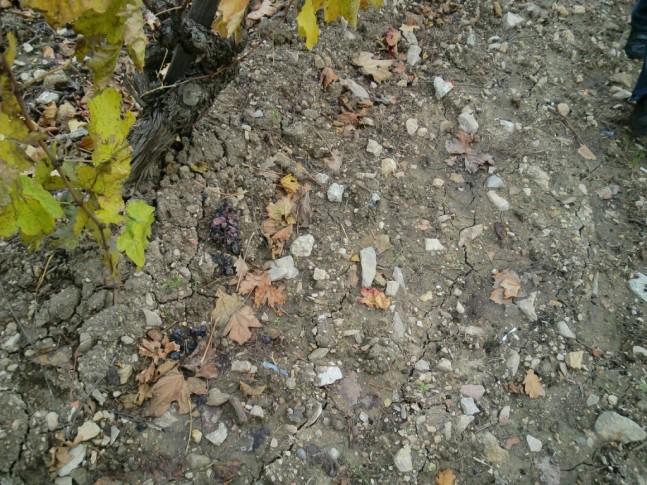
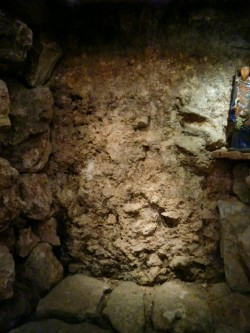
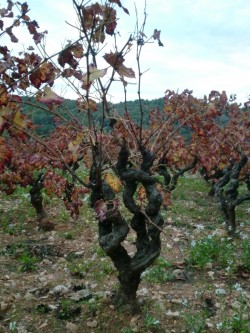
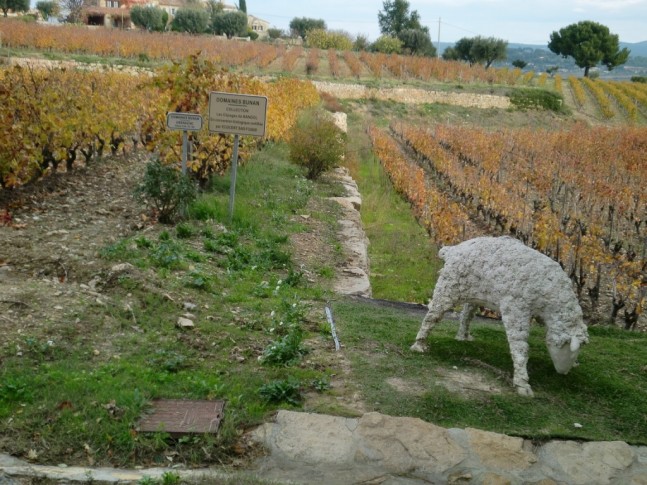
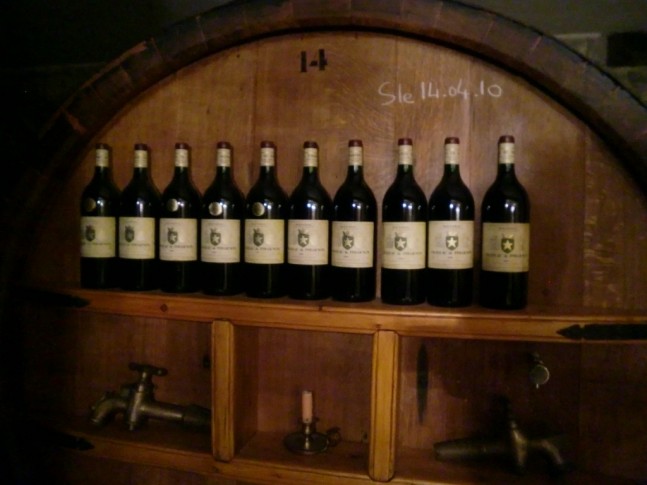


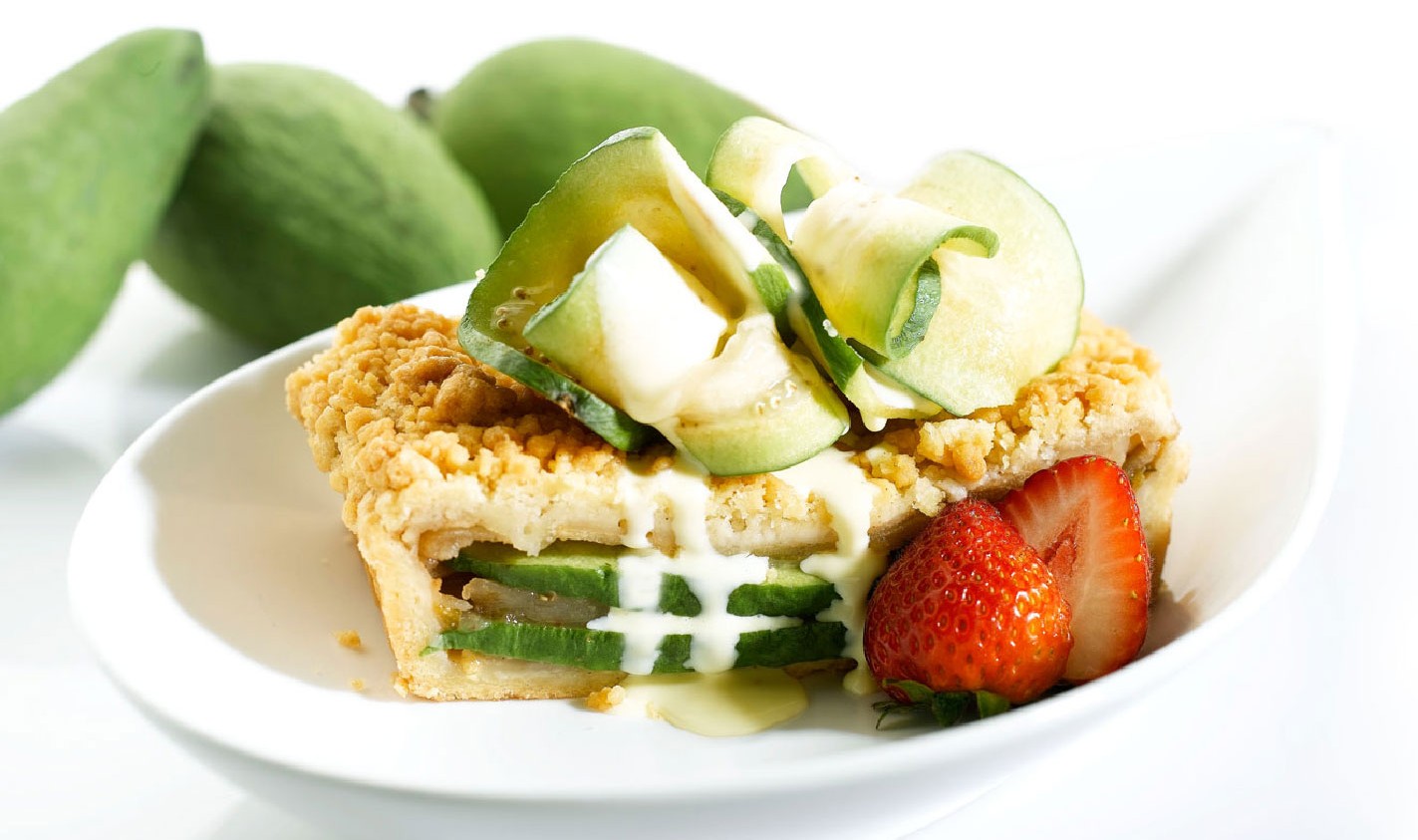


4 Comments to Singapore Sommelier Shalom Chin Provence Blog Part 2 – A Day in Bandol | Comments Feed
Alright alrghit alright that’s exactly what I needed!
This has made my day. I wish all psotnigs were this good.
This is both street smart and intlegilent.
Arctiles like this make life so much simpler.
The comments are closed.